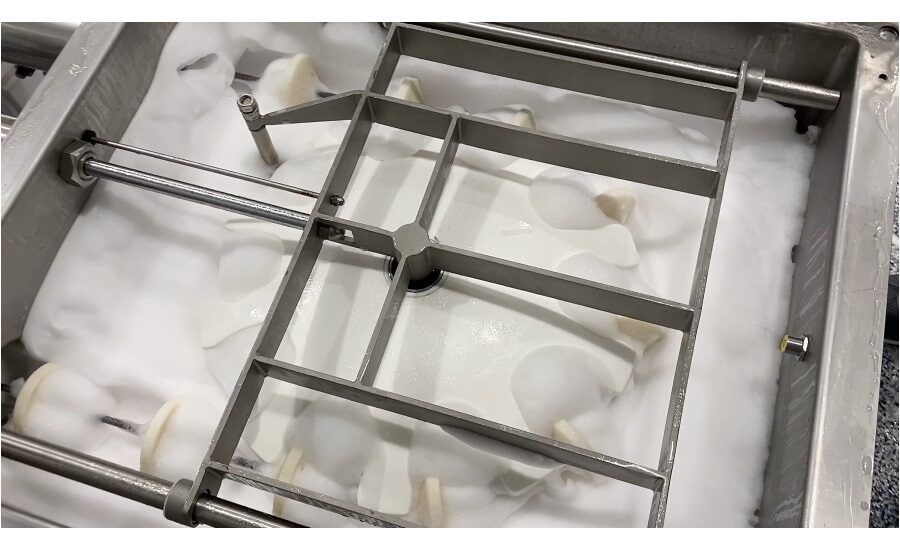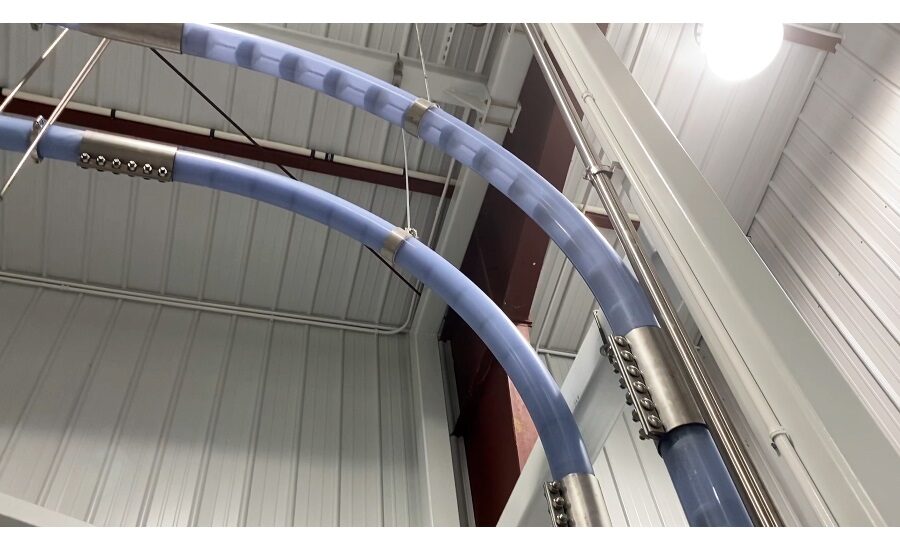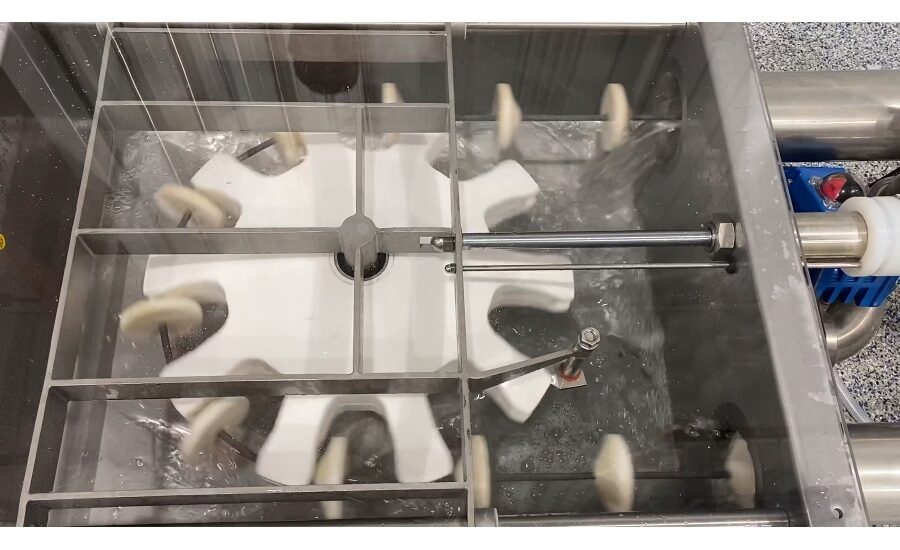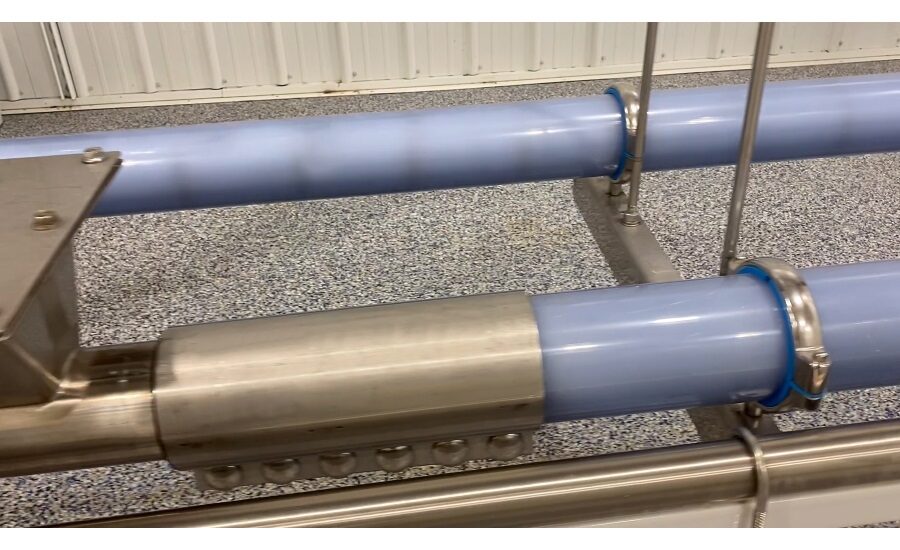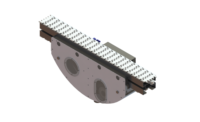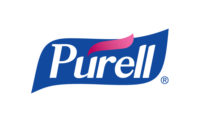For snack and bakery products, to meet increasingly strict compliance standards, such as the Food Safety Modernization Act (FSMA) and Global Food Safety Initiative (GFSI), food processors now regularly utilize ATP testing to monitor equipment surfaces for microbial growth. Add to this the need to minimize cross contamination of products or ingredients with allergens after production changeovers, and more processors are realizing that the traditional cumbersome means of cleaning conveying equipment may not be sufficient to meet today’s rigorous compliance requirements.
When conventional conveyors need to be disassembled, cleaned, and reassembled to reach all exposed internal surfaces, potential downtime can extend to days. If this proves too onerous, some snack and bakery product food processors dedicate separate conveyor lines to specific products, which increases capital equipment costs, labor, and the production space required.
As an alternative to speed the process, a substantial number of processors have turned to tubular drag conveyor systems, which gently move product through a sealed, enclosed tube using a drag cable and circular discs pulled through on a loop—ideal for delicate items. Because tubular cable conveyors are enclosed, these systems can be quickly and effectively flooded with water, flushed, rinsed, cleansed, and thoroughly sanitized without disassembly—a process called “wet cleaning”.
To examine the benefits of implementing this “wet cleaning” process for the snack and bakery food industry, we discuss the advantages and benefits with Karl Seidel, marketing director of Cablevey Conveyors, a mechanical conveyor manufacturer that serves specialty food markets globally.
Q: What are the advantages of the wet cleaning process for the snack and baking goods industry?
A: Essentially, sanitizing wet clean flushes use an enclosed system to improve food safety and increase speed of product changeovers without conveyor disassembly. The “wet clean” approach significantly improves food safety compliance and system reliability for a wide variety of snack and bakery product types, including anything using nuts, grains, and cereals. The technique, in fact, thoroughly flushes out any potential allergens like nuts or gluten from conveying equipment. Typically, food processors must display a warning on packaging for consumers when product is processed on equipment that handles nuts.
Since a complete and thorough cleaning can be accomplished without disassembly of the system, the entire process only takes 20-90 minutes. This can substantially reduce downtime during production changeovers and eliminate the need for unnecessary additional dedicated conveyor lines. For food processors conveying a specific product, regular cleaning can be set to run on an automated basis.
Q: What is the conveying capacity and how does the wet cleaning process work?
A: A tubular cable conveyor system with automated wet cleaning capability from Cablevey Conveyors, for instance, can convey up to 2000 cubic feet per hour of materials with numerous layouts using multiple inlets and outlets. The cable conveyor’s wet cleaning process internally cleans the tube in several steps starting with a water rinse followed by foaming agent, a sanitizing rinse, and a final water rinse. Once the system is thoroughly flushed out, drying is achieved by attaching urethane wipers to the tubular conveyor’s discs, which act like a squeegee to remove any residual water.
By automating the cleaning, the system is essentially self-cleaning. So, it is convenient for operators to let it run through the cleaning process and while they take care of other tasks.
Q: In terms of ensuring snack and bakery food safety and cleanliness, are there any options that can help?
A: Clear tubes can be chosen as an option for the conveyor system to provide greater visibility into the cleanliness of the equipment and the cleaning process as it occurs. Another unique inspection option enables the running of a small, lighted camera system internally through the tubes, with video viewable on his smartphone via an app. Usually, this level of inspection is performed on an as-needed basis to further verify or document cleanliness.
The tubular conveyor is clear except where the clamps are, so operators can visually check at any time, and the internal camera system allows seeing essentially every nook and cranny from the inside. This, along with regular ATP testing, can provide a greater degree of confidence that the processor is reliably meeting all necessary QA and food safety standards.
Q: In what kinds of operations can wet cleaning have the greatest impact?
A: The wet cleaning process often has the greatest impact in operations that rely on open systems, such as bucket elevators or belt conveyors, which traditionally must be disassembled, cleaned, or soaked, and then reassembled—a labor and time intensive process.
In one example where the wet clean process was used, it dramatically streamlined cleaning, food handling, and processing at a West Coast nut processor. The processor was using several bucket elevators to convey product in its nut conveyor system and had to spend several days a month on cleaning. To clean the equipment, the bucket elevators had to be shut down, powered off, protective shrouding removed, and then disassembled—with the process reversed to come back online.
When the processor switched to an automated wet cleaning system, however, it cut production downtime to a fraction of the time required and freed the work crew to take on other vital tasks.
In another example, a granola processor in the Northwest switched from belt conveyors to tubular cable conveyors that could be wet cleaned without disassembly. The goal was to streamline cleaning and flush out any potential nut allergens from the system.
Instead of using basically dedicated lines, as was done previously, with the wet clean process they can run about five or six different products through the same line while remaining compliant. That has significantly improved their efficiency and production flexibility.
For more info, call toll free: 1 (800) 247-3344; Fax: +1 (641) 673-7419; email: info@cablevey.com; or visit https://cablevey.com.
